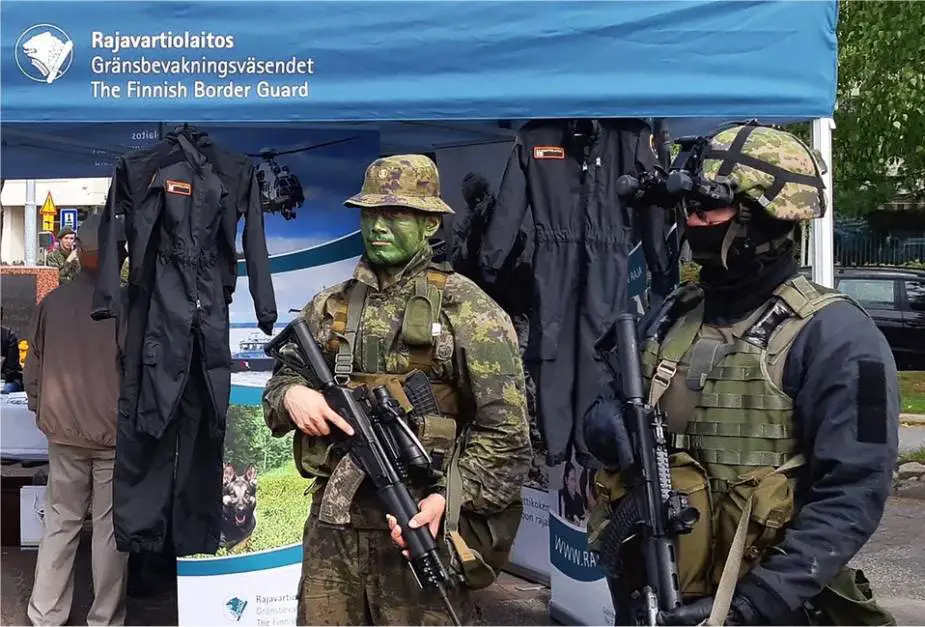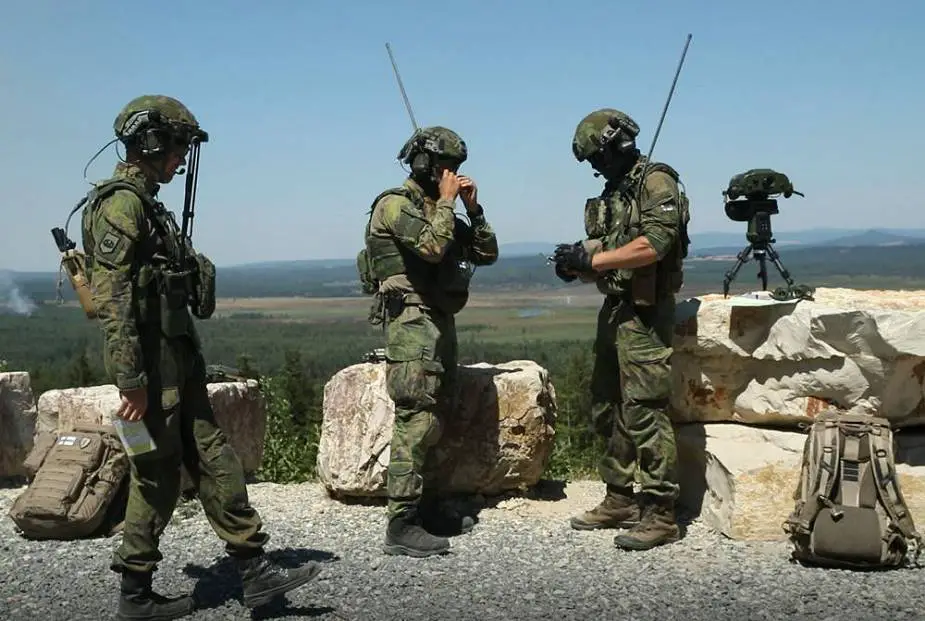As of 4 April 2023, Finland has officially become the latest member of NATO. This comes after the country deposited its instrument of accession to the North Atlantic Treaty with the United States at NATO Headquarters in Brussels. The Accession Protocol was signed by NATO Allies on 5 July 2022, and after approval by all 30 national parliaments, Finland's membership has now been ratified. What are the political and military consequences of Finland's accession to NATO?
Follow Army Recognition on Google News at this link

The Finnish Border Guard plays a crucial role in maintaining the country's security and protecting its borders, working closely with other national and international agencies to ensure effective border management and control. (Picture source Wikimedia)
Finland shares a border with Russia to its east. This border is approximately 1,340 kilometers long, making it one of the longest borders in Europe. It stretches from the northern coast of the Gulf of Finland in the south to the Arctic Ocean in the north, passing through various landscapes such as forests, lakes, and swamps.
The border between Finland and Russia has historical significance, as it has changed several times throughout history due to wars and territorial disputes. Currently, the border is peaceful, and both countries maintain diplomatic relations and cooperate on various matters, including trade, border control, and environmental issues.
Russia has historically been sensitive to foreign military alliances near its borders. Finland's accession to NATO, brings the alliance's military presence even closer to Russia, potentially raising concerns about the security of their western border. This could lead to an increased military buildup in the region, as Russia may feel the need to counterbalance NATO's expansion.
Russia has expressed concerns about NATO's expansion in Eastern Europe, fearing that it could lead to encirclement. With the adhesion of Finland, another NATO member is now along Russia's border, potentially exacerbating these fears. Finland's NATO membership could be seen as a threat by Russia, leading to increased tensions and potentially damaging bilateral relations between the two countries. This could have economic, political, and security repercussions for Finland.
As a member of NATO, Finland is now under the protection of the alliance's collective defense, as stated in Article 5 of the NATO treaty. This potentially enhances Finland's security against potential threats and provides a strong deterrent against aggression.
As a NATO member, Finland will have access to shared resources, including military equipment, intelligence, and training opportunities. This could improve the country's defense capabilities and help maintain a more robust military.
Membership in NATO will boost Finland's international standing and influence in global affairs, especially regarding defense and security matters. Joining NATO will strengthen Finland's relationships with other NATO members, leading to increased cooperation and collaboration on various issues, including trade, technology, and security.

Finnish soldiers receive a firing call during a multinational live-fire display as part of Exercise Dynamic Front 2022 (DF22), Grafenwoehr Training Area, Germany, July 22, 2022. (Picture source U.S. DoD)
What is the military power of the Finnish armed forces:
The Finnish Army had around 13,500 active-duty personnel, including both professional soldiers and conscripts. The Army is the largest branch of the Finnish military and is responsible for land-based operations and defending the nation's territorial integrity. The Finnish Army is the largest branch of Finland's military and is responsible for land-based operations.
The Finnish Army primarily uses the Leopard 2A4 and 2A6 tanks, which were acquired from Germany. These tanks provide significant firepower and protection for ground forces. The army operates a variety of IFVs and APCs, including the Patria AMV, the BMP-2, and the Sisu XA series. These vehicles are designed to transport and support infantry troops during combat operations.
The Finnish Army fields a range of artillery systems, including the K9 Thunder self-propelled howitzer, the 155 K 98 (Tampella) towed howitzer, and the M270 Multiple Launch Rocket System (MLRS). The Finnish land forces also employ a mix of short-range and medium-range air defense systems, including the NASAMS 2 surface-to-air missile system, the Crotale NG, and the RBS 70 and RBS 90 MANPADS.
The Finnish Army has several anti-tank guided missile systems, such as the Spike-LR, Spike-MR, and the NLAW. In terms of small arms, the Finnish soldiers use a variety of small arms, including the RK 62 and RK 95 TP assault rifles, the Sako TRG sniper rifles, and the PKM machine gun.
The Finnish Army also operates NH90 helicopters for transport and utility purposes.
The Finnish Navy had roughly 3,150 active-duty personnel. The Navy is responsible for safeguarding Finland's maritime interests, territorial waters, and providing coastal defense.
Finnish Air Force: The Finnish Air Force had around 2,700 active-duty personnel. The primary mission of the Air Force is to maintain air superiority and defend Finnish airspace.
In addition to the active-duty personnel, Finland maintains a large reserve force, with approximately 238,000 reservists. The size and composition of Finland's reserve force are essential components of the country's defense strategy, which emphasizes total defense and the ability to mobilize a significant portion of the population in case of a military threat.















